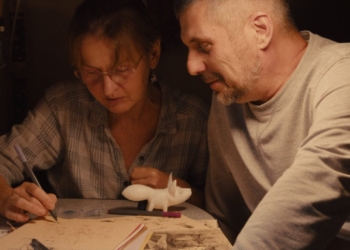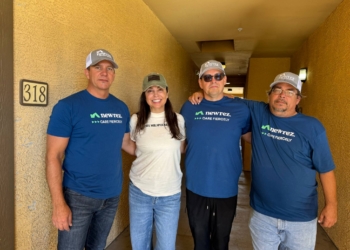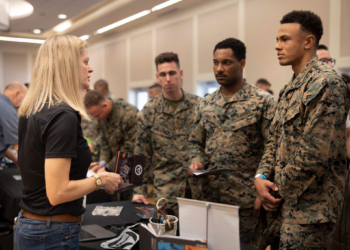Six Americans are trapped in Saddam Hussein’s Baghdad during the invasion of Kuwait. They’re high-value targets. Two of them are U.S. Army officers, a third is a CIA station chief, another a traumatized crypto analyst. Their lives are in peril. Only one country can save them …
This scenario sounds like the plot of a compelling novel but describes the true dilemma of six men in peril, desperately needing a way out of a life-threatening situation.

Author John Pomfret, a Pulitzer Prize finalist and long-time Associated Press and Washington Post reporter, tells the gripping account of the Americans’ plight in his book, “From Warsaw with Love: Polish Spies, the CIA, and the Forging of an Unlikely Alliance.” Their story unfolds within the greater context of the historical relationship between U.S. and Polish intelligence.
Pomfret delves into the necessary, disappointing, and respectful — if not symbiotic — alliance that defined American-Polish intelligence relations before, during, and after the Cold War.
He maps out the relationship through several Polish spies, primarily Marian Zacharski, a Southern California-based sales rep for the Polish American Machine Company (POLAMCO).
POLAMCO was a Polish state-run firm that sold machinery to companies like Lockheed, who ironically used POLAMCO tools in its U.S. Department of Defense projects.
Another great read: ‘The Outside Man’ is an action-packed thriller
But at the heart of this work is the predicament of the Americans and how the Poles came to their rescue, highlighting the amiable connection, but one that sometimes dissolved, leaving Polish spies out in the cold.
The author describes it as “a meditation about alliances and what friends do for friends.”
Pomfret broke the story about Polish spies saving six American officers in Iraq while reporting for the Washington Post in Eastern Europe during the 1990s. The classified undertaking was called “Operation Friendly Saddam.”
Pomfret felt he had the basis for a good book. He just needed to find some of the actors.
He established an acquaintance with the man who ran the operation, Polish intelligence officer Gromosław Czempiński. Czempiński served as a Polish spy during the nation’s communist Cold War days.
“I found the CIA station chief, but he basically pretended he was dead … literally, he encouraged other people to kind of let me think that he was dead,” said Pomfret.
One of the crypto analysts, emotionally impacted by the ordeal, passed away from a heart attack. His family provided information to Pomfret. Another was still active in the field.
“But I really needed kind of a first-person narrative. And finally, one of the Poles — as I was kind of doing the research — gave me the name of one American: a guy named Fred Hart.”
While researching a different project in Alabama, Pomfret met a member of the Air Force who offered to find Hart, a retired U.S. Army major.
“Fred was more than open, and it turned out that Fred had written a report about this for the Army in which he doesn’t really say what happened, but he put a lot of great detail in it,” Pomfret shared.
Pomfret got the name of Maj. John Feeley from Hart. He spent several days with Feeley talking about the operation, saying that interviewing the Americans was important because “now I really had put names to faces, and they were incredibly helpful in telling their side of the story.”
Pomfret was fascinated by the idea of the operation’s backstory. “How did we get there? How did we actually ask them to do it? And why did we ask them to do it?”
He does a laudable job at answering his own questions, furnishing the reader with a dynamic analysis of the mission that is enjoyably digestible and absorbing.
“The CIA had already approached allied intelligence agencies, including the British and the Germans, for help, but they were busy trying to extract their own people,” he wrote. “The Americans couldn’t pull off the operation themselves.”







































